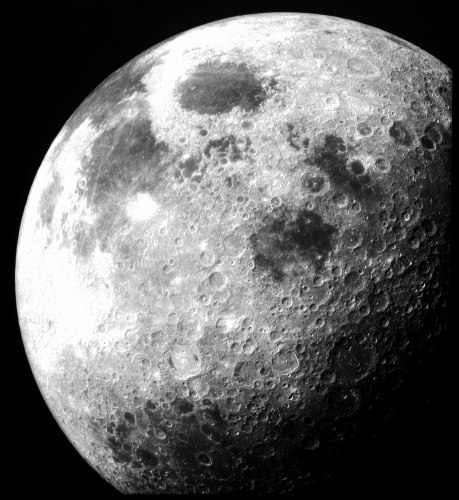Scientists have built a computer simulation that can explain why the 15% or more of the small (<10 km) asteroids orbiting near Earth and beyond have miniature moons. The discovery may also help us to prevent untimely impacts on Earth in future.
 In a paper in this weeks Nature CNRS researcher Kevin Walsh from the Cote d'Azur Observatory in France has shed some light, quite literally, on the way that asteroids behave in space. At the heart of the theory is the so-called YORP effect, short for Yarkovsky O'Keefe Radzievskii Paddack, in which light hitting a rotating body can alter its spin by giving it a "nano nudge" as the light hits, warms and then is re-radiated away from the surface of the rotating body. Over time this succession of tiny pushes can build up, accelerating the object to a significant speed, or work the other way, slowing it down.
In a paper in this weeks Nature CNRS researcher Kevin Walsh from the Cote d'Azur Observatory in France has shed some light, quite literally, on the way that asteroids behave in space. At the heart of the theory is the so-called YORP effect, short for Yarkovsky O'Keefe Radzievskii Paddack, in which light hitting a rotating body can alter its spin by giving it a "nano nudge" as the light hits, warms and then is re-radiated away from the surface of the rotating body. Over time this succession of tiny pushes can build up, accelerating the object to a significant speed, or work the other way, slowing it down.
In the case of making mini-moons, if the spin of an asteroid increases material can begin to gather around the object's waist, producing an equatorial bulge. As the spin increases, further material is flung from the surface into a disc-like halo arond the parent body. This slowly coalesces into a single satellite which then continues to orbit the asteroid that gave birth to it.
To test their simulation the team entered the parameters for a nearby asteroid called 1999 KY36, which is about 15km across and completes one rotation every 2.8 hours. It has a small moon 0.5km in diameter orbiting about 1.5km above the asteroid's surface. Using information about the parent object's dimensions and density, the simulation was able to accurately predict these features.
The results aren't just academically very interesting because understanding how asteroids behave is absolutely critical if we're to prevent the human race from following the dinosaurs into an icy extinction. Indeed our planet is littered with a number of "doublet" craters where asteroids and their moons have crash-landed side by side.
Another spin off from the work was the prediction that as a parent asteroid loses material from its poles to make a moon, raw rock is revealed beneath. This could provide scientists with pristine samples from the interior of the asteroid, which contains a snapshot of the material from which the solar system was assembled 4.5 billion years ago.










Comments
Add a comment